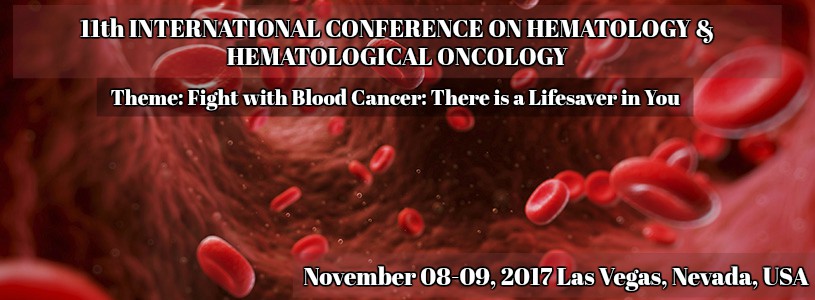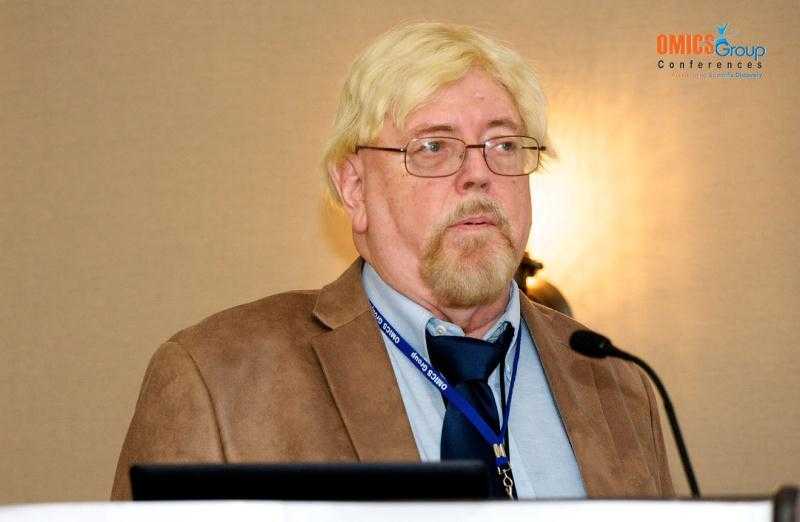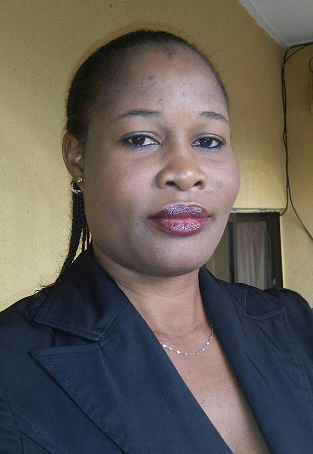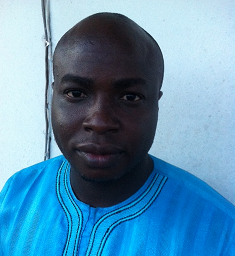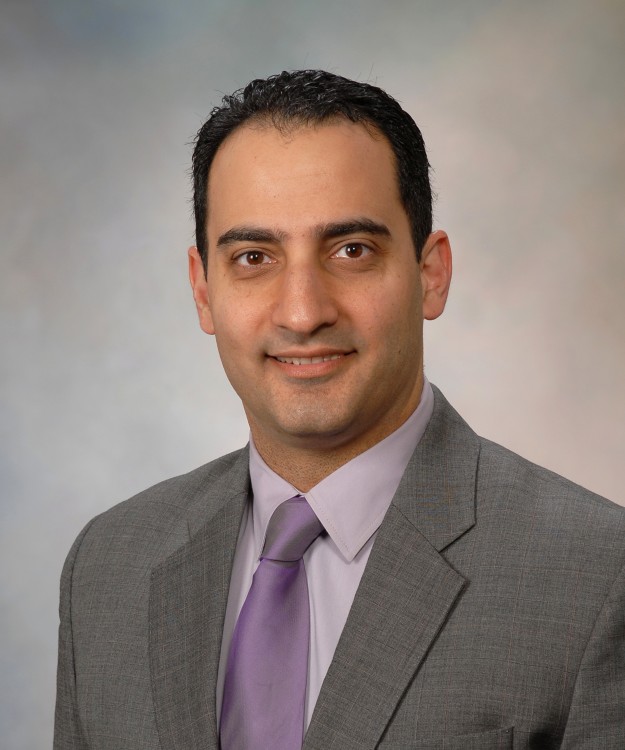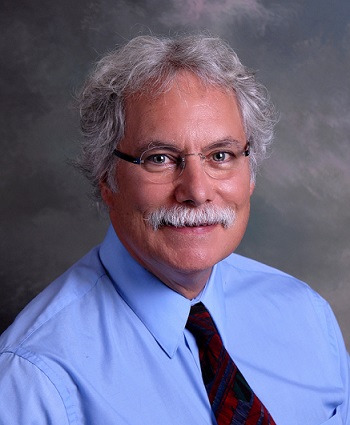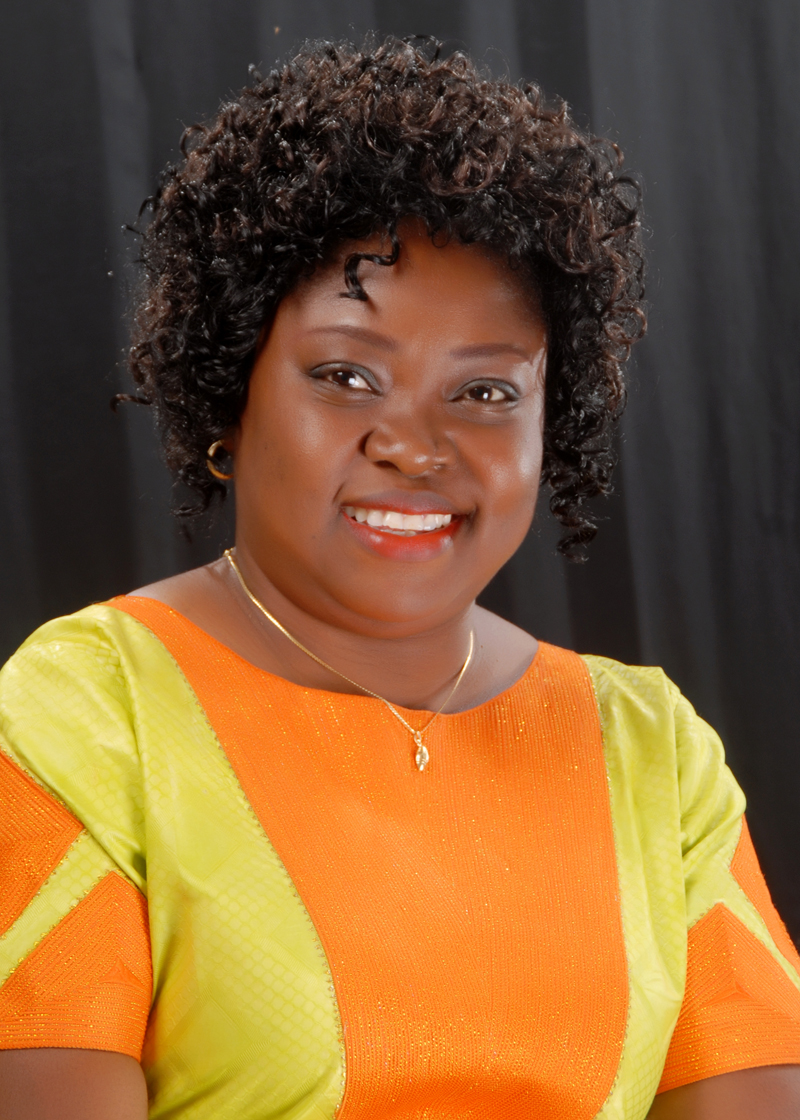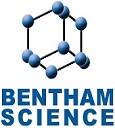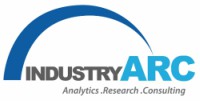Theme: Fight with Blood Cancer: There is a Lifesaver in You
Hematology 2017
11th International Conference on Hematology and Hematological Oncology
Date: November 08-09, 2017
Venue: Las Vegas, Nevada, USA
Hematology 2017 has been designed with many interesting and informative scientific sessions; it includes all possible aspects of Hematology research.
Hematology is the science or study of blood, blood-forming organs and blood diseases. The medical aspect of hematology is concerned with the treatment of blood disorders and malignancies, including types of hemophilia, leukemia, lymphoma and sickle-cell anemia. Hematology is a branch of internal medicine that deals with the physiology, pathology, etiology, diagnosis, treatment, prognosis and prevention of blood-related disorders. Hematologists also focus on lymphatic organs and bone marrow and may diagnose blood count irregularities or platelet irregularities. They are able to treat organs that are fed by blood cells, including the lymph nodes, spleen, thymus and lymphoid tissue.
Hematology science involves the five types of white blood cells — neutrophils, monocytes, lymphocytes, eosinophils and basophils. Red blood cells are also known as erythrocytes. Plasma is the liquid component of blood that carries blood cells through the body. Nutrients, waste, antibodies, proteins, and hormones are also transported in plasma.
- Track 1-1 Blood Components
- Track 1-2 Erythrocytes and Leukocytes
- Track 1-3 Platelets and Thrombocytopenia
- Track 1-4 Complete Blood Count and Polycythemia
- Track 1-5 Different Types of Anemia
- Track 1-6 Polymorphism and Hematopoiesis
A hematologic-oncology is the study that involves in the diagnosis, treatment and/or prevention of blood diseases and cancers such as iron-deficiency anemia, hemophilia, sickle-cell disease, leukemia and lymphoma. This physician is trained in hematology — the study of blood — and oncology — the study of cancer. Hematologist-oncologists do not usually treat operable cancers such as prostate cancer, but specialize in treating blood cancers, such as Hodgkins and non-Hodgkins lymphomas, leukemias and multiple myelomas. A hematologist-oncologist may also specialize in the management of solid tumors.
Hematologist-oncologists often work closely with colleagues from other departments including: radiation-oncology, surgery, radiology and pathology. Other associated specialties include infectious disease, pain medicine and psychology.
Haematologists also conduct studies in oncology and work with oncologists, people who may specialize only in that field instead of both-the medical treatment of cancer. There are various disorders that people are affected by haematology. A few of these different types of blood conditions that are looked at include anemia, hemophilia, general blood clots, bleeding disorders, etc. As for related blood cancers such as leukemia, myeloma, and lymphoma, these are more serious cases that need to be diagnosed
- Myeloma
- Myelodysplastic syndromes
- Multiple Myeloma
- Leukaemia
- Lymphoma
Lymphatic leukemia which effect the white blood cells(w.b.c) they are closely related to the lymphomas and some of them are unitary diseases which related to the adult T cells leukemia these come under the lymphoproliferative disorders. Mostly they involve in the B-cell sub type lymphocytes. The myeloid leukemia is preferred to the granulocyte precursor in the bone marrow and spinal cord and these arises the abnormal growth in the blood from tissues in the bone marrow. They are mainly related to the hematopoietic cells and these sub title into acute and chronic lymphoblastic leukemia. The acute leukemia is that rapidly producing immature blood cells as they are bulk number of cells healthy cells are not produced in bone marrow due this spill over the blood stream which spread to other body parts. Where as in chronic leukemia highly bulid of matured cells are formed but still abnormal white cells are formed these can not be treated immediately mostly seen in older people. The cancer which originate from white blood cells are called as lymphoma and this disorder is mainly seen in Hodgkin lymphoma these diseases is treated by radiation and chemotherapy, or hematopoietic stem cell transplantation. The cancer which starts with in the cell are called as Non Hodgkin lymphocytes and these lymphocytes are of lymph nodes. The bone marrow which develops too many white blood cells leads to multiple myleoma. The further details on malignance are been discussed in Hematology oncology conference-2015.
- Track 2-1 Acute and Chronic Lymphoblastic Leukemia
- Track 2-2 Hodgkin’s and Non-Hodgkin’s Lymphoma
- Track 2-3 Myelodysplastic Syndromes
- Track 2-4 Multiple Myeloma
- Track 2-5 Myeloma Cancer
- Track 2-6 Myeloid Leukemia
Blood disorders can affect any of the three main components of blood:
- Red blood cells, which carry oxygen to the body's tissues
- White blood cells, which fight infections
- Platelets, which help blood to clot
- Blood disorders can also affect the liquid portion of blood, called plasma.
Treatments and prognosis for blood diseases vary, depending on the blood condition and its severity.
Blood disorders that affect red blood cells include:
Anemia : People with anemia have a low number of red blood cells. Mild anemia often causes no symptoms. More severe anemia can cause fatigue, pale skin, and shortness of breath with exertion.
Iron-deficiency anemia: Iron is necessary for the body to make red blood cells. Low iron intake and loss of blood due to menstruation are the most common causes of iron-deficiency anemia. It may also be caused by blood loss from the GI tract because of ulcers or cancer. Treatment includes iron pills, or rarely, blood transfusion.
Anemia of chronic disease: People with chronic kidney disease or other chronic diseases tend to develop anemia. Anemia of chronic disease does not usually require treatment. Injections of a synthetic hormone, epoetin alfa (Epogen or Procrit), to stimulate the production of blood cells or blood transfusions may be necessary in some people with this form of anemia.
Pernicious anemia (B12 deficiency): A condition that prevents the body from absorbing enough B12 in the diet. This can be caused by a weakened stomach lining or an autoimmune condition. Besides anemia, nerve damage (neuropathy) can eventually result. High doses of B12 prevent long-term problems.
Aplastic anemia: In people with aplastic anemia, the bone marrow does not produce enough blood cells, including red blood cells. This can be caused by a host of conditions, including hepatitis, Epstein-Barr, or HIV -- to the side effect of a drug, to chemotherapy medications, to pregnancy. Medications, blood transfusions, and even a bone marrow transplant may be required to treat aplastic anemia.
Autoimmune hemolytic anemia: In people with this condition, an overactive immune system destroys the body's own red blood cells, causing anemia. Medicines that suppress the immune system, such as prednisone, may be required to stop the process.
Thalassemia: This is a genetic form of anemia that mostly affects people of Mediterranean heritage. Most people have no symptoms and require no treatment. Others may need regular blood transfusions to relieve anemia symptoms.
Sickle cell anemia : A genetic condition that affects mostly people whose families have come from Africa, South or Central America, the Caribbean islands, India, Saudi Arabia, and Mediterranean countries that include Turkey, Greece, and Italy. In sickle cell anemia, the red blood cells are sticky and stiff. They can block blood flow. Severe pain and organ damage can occur.
Polycythemia vera: The body produces too many blood cells, from an unknown cause. The excess red blood cells usually create no problems but may cause blood clots in some people.
Malaria: A mosquito's bite transmits a parasite into a person's blood, where it infects red blood cells. Periodically, the red blood cells rupture, causing fever, chills, and organ damage. This blood infection is most common in parts of Africa but can also be found in other tropical and subtropical areas around the world; those traveling to affected areas should take preventive measures.
Blood Disorders Affecting White Blood Cells
Blood disorders that affect white blood cells include:
Lymphoma : A form of blood cancer that develops in the lymph system. In lymphoma, a white blood cell becomes malignant, multiplying and spreading abnormally. Hodgkin's lymphoma and non-Hodgkin's lymphoma are the two major groups of lymphoma. Treatment with chemotherapy and/or radiation can often extend life with lymphoma, and sometimes cure it.
Leukemia : A form of blood cancer in which a white blood cell becomes malignant and multiplies inside bone marrow. Leukemia may be acute (rapid and severe) or chronic (slowly progressing). Chemotherapy and/or stem cell transplantation (bone marrow transplant) can be used to treat leukemia, and may result in a cure.
Multiple myeloma: A blood cancer in which a white blood cell called a plasma cell becomes malignant. The plasma cells multiply and release damaging substances that eventually cause organ damage. Multiple myeloma has no cure, but stem cell transplant and/or chemotherapy can allow many people to live for years with the condition.
Myelodysplastic syndrome: A family of blood cancers that affect the bone marrow. Myelodysplastic syndrome often progresses very slowly, but may suddenly transform into a severe leukemia. Treatments may include blood transfusions, chemotherapy and stem cell transplant.
Blood Disorders Affecting Platelets
Blood disorders that affect the platelets include:
Thrombocytopenia: A low number of platelets in the blood; numerous conditions cause thrombocytopenia, but most do not result in abnormal bleeding.
Idiopathic thrombocytopenic purpura: A condition causing a persistently low number of platelets in the blood, due to an unknown cause; usually, there are no symptoms, yet abnormal bruising, small red spots on the skin (petechiae), or abnormal bleeding can result.
Heparin -induced thrombocytopenia: A low platelet count caused by a reaction against heparin, a blood thinner given to many hospitalized people to prevent blood clots
Thrombotic thrombocytopenic purpura: A rare blood disorder causing small blood clots to form in blood vessels throughout the body; platelets are used up in the process, causing a low platelet count.
Essential thrombocytosis (primary thrombocythemia): The body produces too many platelets, due to an unknown cause; the platelets do not work properly, resulting in excessive clotting, bleeding, or both.
Blood Disorders Affecting Blood Plasma
Blood disorders that affect blood plasma include:
Hemophilia : A genetic deficiency of certain proteins that help blood to clot; there are multiple forms of hemophilia, ranging in severity from mild to life-threatening.
Von Willebrand disease: von Willebrand factor is a protein in blood that helps blood to clot. In von Willebrand disease, the body either produces too little of the protein, or produces a protein that doesn't work well. The condition is inherited, but most people with von Willebrand disease have no symptoms and don't know they have it. Some people with von Willebrand disease will have excessive bleeding after an injury or during surgery.
Hypercoaguable state (hypercoagulable state): A tendency for the blood to clot too easily; most affected people have only a mild excess tendency to clot, and may never be diagnosed. Some people develop repeated episodes of blood clotting throughout life, requiring them to take a daily blood thinning medicine.
Deep venous thrombosis: A blood clot in a deep vein, usually in the leg; a deep venous thrombosis can dislodge and travel through the heart to the lungs, causing a pulmonary embolism.
- Track 3-1 Molecular Pathogenesis
- Track 3-2 Genetic Blood Disorders
- Track 3-3 Hemophilia A, B and C
- Track 3-4 Idiopathic Thrombocytopenic Purpura (ITP)
- Track 3-5 Von Willebrand
- Track 3-6 Bleeding Disorders
- Track 3-7 Coagulation Factors
- Track 3-8 Hemoglobinopathies
- Track 3-9 Biomarkers for Blood Cancers
Track 4:Blood Disorders: Diagnosis & treatments
Doctors select tests to help diagnose blood disorders based on the person's symptoms and the results of the physical examination. Sometimes a blood disorder causes no symptoms but is discovered when a laboratory test is done for another reason. For example, a complete blood count done as part of a regular check-up may reveal anemia. When a blood disorder is suspected, a complete blood count and other tests may need to be done to determine the specific diagnosis. The blood test most commonly done is the complete blood count (CBC). The CBC is an evaluation of all the cellular components (red blood cells, white blood cells, and platelets) in the blood. Automated machines do this test in less than 1 minute on a small amount of blood. The CBC is supplemented in some instances by examination of blood cells under a microscope. One measure of the body's ability to stop bleeding is the count of the number of platelets. Sometimes doctors need to test how well the platelets function. Other tests can measure the overall function of the many proteins needed for normal blood clotting (clotting factors). The most common of these tests are the prothrombin time (PT) and the partial thromboplastin time (PTT). The levels of individual clotting factors can also be determined.
Blood disorders Treatments include:
- Diet advice
- Oral medication – tablets or liquid medicines
- Anticoagulation therapy
- Intramuscular injections (for example, vitamin B12 injections)
- Blood transfusion (for anemia)
- Platelet transfusion
- Fresh Frozen Plasma transfusion
- Cryoprecipitate transfusion
- Venesection also known as therepeutic phlebotomy (for iron overload or polycythemia)
- Bone marrow transplant (for example, for leukemia)
- All kinds of anti-cancer chemotherapy
- Radiotherapy (for example, for cancer)
- Track 4-1 Gene therapy
- Track 4-2 Vena Cava Filters
- Track 4-3 Surgery, Chemotherapy and Radiotherapy
- Track 4-4 Targeted therapy
- Track 4-5 Role of Translational Medicine
Stem cells are undifferentiated biological cells that can differentiate into specialized cells and can divide (through mitosis) to produce more stem cells.There are three known accessible sources of autologous adult stem cells in humans:
1.Bone marrow, which requires extraction by harvesting, that is, drilling into bone (typically the femur or iliac crest).
2.Adipose tissue (lipid cells), which requires extraction by liposuction.
3.Blood, which requires extraction through apheresis, wherein blood is drawn from the donor (similar to a blood donation), and passed through a machine that extracts the stem cells and returns other portions of the blood to the donor.
Stem cells can also be taken from umbilical cord blood just after birth. Stem cells have the remarkable potential to turn into many different cell types within the body throughout formative years and growth. Additionally, in several tissues they function as a sort of internal repair system, dividing basically without any limit to replenish other cells as long as the person or animal continues to be alive. Once a stem cell divides, each newly developed cell has the potential to stay as a stem cell or become another variety of cell with a more specialised function, like a muscle cell, a red blood corpuscle, or a nerve cell. Stem-cell therapy is the use of stem cells to treat or cure a disease or condition. Bone marrow transplant is the most commonly used stem-cell therapy, however some therapies derived from umbilical cord blood also are in use. A stem cell transplant is a treatment for many forms of cancer. For instance, you might have one if you have leukaemia, myeloma, or some types of lymphoma. Doctors conjointly treat some blood diseases with stem cell transplants.
Track 6:Hematology and Nursing
Hematology nurses are specially trained to provide nursing care for patients with blood diseases or disorders. Some of the more commonly-known blood diseases and disorders a hematology nurse may encounter include: leukemia, lymphoma, sickle cell anemia and hemophilia. Hematology nurses initiate a plan of care to manage symptoms that result from such blood problems. Hematology nursing is often closely associated with oncology nursing, and some nurses will help patients with pain management if their cancer is particularly aggressive. Hematology nurses may work with adults only or specialize in working only with children. Their responsibilities include: taking medical histories, performing examinations, starting IVs and working with physicians to diagnose various blood diseases and disorders. Hematology nurses also educate patients and their families on how to live with and manage their blood disease. They may also assist with blood transfusions, blood tests, research and chemotherapy. Advanced practice hematology nurses have some prescriptive authority and can also order diagnostic lab work done.Hematology nurses are specially trained to provide nursing care for patients with blood diseases or disorders. Some of the more commonly-known blood diseases and disorders a hematology nurse may encounter include: leukemia, lymphoma, sickle cell anemia and hemophilia. Hematology nurses initiate a plan of care to manage symptoms that result from such blood problems. Hematology nursing is often closely associated with oncology nursing, and some nurses will help patients with pain management if their cancer is particularly aggressive. Hematology nurses may work with adults only or specialize in working only with children. Their responsibilities include: taking medical histories, performing examinations, starting IVs and working with physicians to diagnose various blood diseases and disorders. Hematology nurses also educate patients and their families on how to live with and manage their blood disease. They may also assist with blood transfusions, blood tests, research and chemotherapy. Advanced practice hematology nurses have some prescriptive authority and can also order diagnostic lab work done.
Track 7:Hematology and Pharma industry
The global market for Hematologic drugs is predicted to grow twice as fast as that of other pharmaceuticals over the next five years.
Top companies in the list includes janssen biotech,takeda oncology,Bristol-Mayers squibb,boehringer ingelheim, Roche, Novartis, Celgene, Johnson & Johnson, Bristol-Myers Squibb, Lilly, Takeda, AstraZeneca, Merck & Co., Amgen, Pfizer, Astellas, Bayer, Otsuka, Sanofi, Merck KGaA, Eisai, AbbVie, Pharmacyclics, Incyte
- Biological Drugs
- Generic Drugs
- Increasing Investments
- Healthcare Expenditures
- Cancer Pharmaceutical Companies
Blood tests are done on animals for a variety of reasons. Screening tests, such as a complete blood count (CBC), may be done on clinically normal animals when they are acquired to avoid a financial and/or emotional commitment to a diseased animal, to examine geriatric patients for subclinical disease, or to identify a condition that might make an animal an anesthetic or surgical risk. Screening tests are often done when an ill animal is first examined, especially if systemic signs of illness are present and a specific diagnosis is not apparent from the history and physical examination. Tests may be done to assist in the determination of the severity of a disease, to help formulate a prognosis, and to monitor the response to therapy or progression of disease. Decisions to request hematology tests in animals are largely based on the cost of the test versus the potential benefit of the result to the animal. A CBC is routinely done to establish a database for patient evaluation, while other hematology tests may be done in an attempt to evaluate a specific problem.
Blood transfusion is the transfer of blood or a blood component from one person (a donor) to another (a recipient). In the United States, about 30 million blood transfusions are given every year. Transfusions are given to increase the blood's ability to carry oxygen, restore the amount of blood in the body (blood volume), and correct clotting problems. People who have been injured, people undergoing surgery, and people receiving treatment for cancers (such as leukemia) or other diseases (such as the blood diseases sickle cell anemia and thalassemia) are typical recipients. In the US, the Food and Drug Administration (FDA) strictly regulates the collection, storage, and transportation of blood and its components. These regulations were developed to protect both the donor and the recipient. Additional standards are upheld by many state and local health authorities, as well as by organizations such as the American Red Cross and the AABB (formerly, the American Association of Blood Banks). Because of these regulations, giving blood and receiving blood are very safe. However, transfusions still pose risks for the recipient, such as allergic reactions, fever and chills, excess blood volume, and bacterial and viral infections. Even though the chance of contracting AIDS, hepatitis, or other infections from transfusions is remote, doctors are well aware of these risks and order transfusions only when there is no alternative. Before ordering a transfusion (except in an emergency), doctors explain the risks of transfusion to people and ask them to sign a document affirming that they understand the risks and giving their consent for transfusion (called informed consent).
Immunology is a branch of biology that covers the study of immune systems in all organisms. It charts, measures, and contextualizes the: physiological functioning of the immune system in states of both health and diseases; malfunctions of the immune system in immunological disorders (such as autoimmune diseases, hypersensitivities, immune deficiency, and transplant rejection); the physical, chemical and physiological characteristics of the components of the immune system in vitro, in situ, and in vivo. Immunology has applications in numerous disciplines of medicine, particularly in the fields of organ transplantation, oncology, virology, bacteriology, parasitology, psychiatry, and dermatology. The important lymphoid organs of the immune system are the thymus and bone marrow, and chief lymphatic tissues such as spleen, tonsils, lymph vessels, lymph nodes, adenoids, and liver. When health conditions worsen to emergency status, portions of immune system organs including the thymus, spleen, bone marrow, lymph nodes and other lymphatic tissues can be surgically excised for examination while patients are still alive.
Many components of the immune system are typically cellular in nature and not associated with any specific organ; but rather are embedded or circulating in various tissues located throughout the body. Clinical immunology is the study of diseases caused by disorders of the immune system (failure, aberrant action, and malignant growth of the cellular elements of the system). It also involves diseases of other systems, where immune reactions play a part in the pathology and clinical features.
The diseases caused by disorders of the immune system fall into two broad categories:
- immunodeficiency, in which parts of the immune system fail to provide an adequate response (examples include chronic granulomatous disease and primary immune diseases);
- autoimmunity, in which the immune system attacks its own host's body (examples include systemic lupus erythematosus, rheumatoid arthritis, Hashimoto's disease and myasthenia gravis).
Other immune system disorders include various hypersensitivities (such as in asthma and other allergies) that respond inappropriately to otherwise harmless compounds.
A blood substitute is a substance used to mimic and fulfill some functions of biological blood. It aims to provide an alternative to blood transfusion, which is transferring blood or blood-based products from one person into another. Thus far, there are no well-accepted oxygen-carrying blood substitutes, which is the typical objective of a red blood cell transfusion; however, there are widely available non-blood volume expanders for cases where only volume restoration is required. These are helping doctors and surgeons avoid the risks of disease transmission and immune suppression, address the chronic blood donor shortage, and address the concerns of Jehovah's Witnesses and others who have religious objections to receiving transfused blood. Pathogen reduction using riboflavin and UV light is a method by which infectious pathogens in blood for transfusion are inactivated by adding riboflavin and irradiating withUV light. This method reduces the infectious levels of disease-causing agents that may be found in donated blood components, while still maintaining good quality blood components for transfusion. This type of approach to increase blood safety is also known as “pathogen inactivation” in the industry. An artificial cell or minimal cell is an engineered particle that mimics one or many functions of a biological cell. The term does not refer to a specific physical entity, but rather to the idea that certain functions or structures of biological cells can be replaced or supplemented with a synthetic entity. Often, artificial cells are biological or polymeric membranes which enclose biologically active materials. As such, nanoparticles, liposomes, polymersomes, microcapsules and a number of other particles have qualified as artificial cells. Manufacturing of semi synthetic products of drugs are known as therapeutic biological products. Anticoagulants (antithrombics) are a class of drugs that work to prevent the coagulation (clotting) of blood. Such substances occur naturally in leeches and blood-sucking insects.
Track 12:Various Aspects of Hematology
Pediatric Haematology and Oncology is an international peer-reviewed medical journal that covers all aspects of pediatrichematology and oncology. The journal covers immunology, pathology, and pharmacology in relation to blood diseases and cancer in children and shows how basic experimental research can contribute to the understanding of clinical problems. Physicians specialized in hematology are known as hematologists or haematologists. Their routine work mainly includes the care and treatment of patients with hematological diseases, although some may also work at the hematology laboratory viewing blood films and bone marrow slides under the microscope, interpreting various hematological test results and blood clotting test results. In some institutions, hematologists also manage the hematology laboratory. Physicians who work in hematology laboratories, and most commonly manage them, are pathologists specialized in the diagnosis of hematological diseases, referred to as hematopathologists or haematopathologists. Experimental Hematology is a peer-reviewed medical journal of hematology, which publishes original research articles and reviews, as well as the abstracts of the annual proceedings of the Society for Hematology and Stem Cells and they should be done under the Hematology guidlines. This also include hematopathology.
Track 13:New Drug Discovery in Hematology
Advancing novel therapeutic agents for the treatment of malignancy into the marketplace is an increasingly costly and lengthy process. As such, new strategies for drug discovery are needed. Drug repurposing represents an opportunity to rapidly advance new therapeutic strategies into clinical trials at a relatively low cost. Known on-patent or off-patent drugs with unrecognized anticancer activity can be rapidly advanced into clinical testing for this new indication by leveraging their known pharmacology, pharmacokinetics, and toxicology. Using this approach, academic groups can participate in the drug discovery field and smaller biotechnology companies can “de-risk” early-stage drug discovery projects. Here, several scientific approaches used to identify drug repurposing opportunities are highlighted, with a focus on hematologic malignancies. In addition, a discussion of the regulatory issues that are unique to drug repurposing and how they impact developing old drugs for new indications is included. Finally, the mechanisms to enhance drug repurposing through increased collaborations between academia, industry, and nonprofit charitable organizations are discussed.
Track 14:Hematology : Case Report
A case report is a detailed report consisting the symptoms, signs, diagnosis, treatment, and follow-up of an individual patient. A case report is generally considered a type of evidence of the work carried out and the output attained.
Case studies are extremely useful records of the clinical practices of a profession. They are a record of clinical interactions which help us to frame questions for more rigorously designed clinical studies. Case studies also provide valuable teaching material, demonstrating both classical and unusual presentations which may challenge the practitioner.
- Track 14-1 Diagnostic case reports
- Track 14-2 Symptom based case reports
- Track 14-3 Therapy based case report
- Track 14-4 Medication based case report
- Track 14-5 Research based case report
Track 15:Entrepreneurs Investment Meet
A platform aimed to connect Entrepreneurs, Proposers and the Investors worldwide. It's intended to create and facilitate the most optimized and viable meeting place for engaging people in global business discussions, evaluation and execution of promising business ideas. An investor could be able to find out the highest potential investment opportunities globally, which provide good return on investment. For entrepreneurs, this would be an ideal place to find out suitable investors and partners to start and/or expand their business. Thus it is a perfect place to connect Entrepreneurs, Business Owners, Early Stage Companies and Established Corporates with National or International Investors, Corporate Investors and Potential Business Partners.
Conference Series Ltd is overwhelmed to announce the commencement of its eleventh consecutive Hematology conference.
11th International Conference on Hematology and Hematological Oncology
Date: November 08-09, 2017
Venue: Las Vegas, Nevada, USA.
Hematology 2017 will be organized around the theme “Fight with Blood Cancer: There is a Lifesaver in You”.
Hematology 2017 is comprised of many interactive scientific sessions on different types of Blood disorders as well as various diagnostic and therapeutic advancements in this field. It is an initiative to unite the diverse research and business communities working in this field under a one roof to explore every single aspect of Hematology and Blood Diseases. Hematology 2017 welcomes the hematologists, immunologists, pathologists, oncologists, research scholars, industrial professionals and student delegates from biomedical and healthcare sectors to be a part of it in Hematology conferences.
According to market study, market value of Hematology at present is $15.13 billion. A major part of research is going on at the top Universities across the globe, on Hematology conference and the grants allotted for this research field is around $10.54 billion. Many companies are associated with the blood testing equipment along with various diagnostic instruments, hematologic drugs and other therapeutics, the revenue generated is around $21.1 billion on average by this companies. Besides this various societies and research labs are also associated in this research field.
Hematology conferences are organized Conference Series Ltd which is comprised of 3000+ Global Events with over 600+ Conferences, 1200+ Symposiums and 1200+Workshops on diverse Medical, Pharmaceutical, Clinical, Engineering, Science, Technology, Business and Management field is organizing conferences all over the globe. Hematology 2017 will provide an excellent opportunity for the budding scientists and young researchers through its special initiatives like Young Researcher Forum, Poster Presentation and E-poster and Live Streaming, B2B and Scientific Meetings.
Why to attend?
Hematology 2017 will provide a stimulating scientific environment and a platform for the participants to exchange ideas, establish research collaboration and networking by attending the Hematology conferences. It will be amazing opportunity for the attendees to explore the beautiful city with gaining knowledge, sure to raise insights, conflate present with future and cogitate on ideas and reality in Hematology meetings. To fight aginst these hard to cure blood diseases, Hematology 2017 has taken this intiative to explore every aspects of Hematology research.
Target Audience
- Hematologists
- Immunologists
- Pathologists
- Oncologists
- Research Scholars
- Industrial professionals from biomedical companies and healthcare sectors.
- Student delegates from Academia and Research along with the industrial professionals
Summary
Hematology is a branch of biology that includes various research areas such as pathology, internal medicine, clinical laboratory, physiology, immunology and pediatrics. This conference will witness a conglomeration of various arenas in Hematology and as it involves a vast range of medical streams within it, this conference will be an excellent platform for interdisciplinary interactions, to exchange and share knowledge under a single roof.
The organizing committee is gearing up for an exciting and informative conference program including plenary lectures, symposia, workshops on a variety of topics, poster presentations and various programs for participants from all over the world. We invite you to join us at the Hematology 2017, where you will be sure to have a meaningful experience with scholars from around the world.
For more details please visit: http://hematology.conferenceseries.com/
Importance & Scope:
Hematology 2017, Las Vegas, Nevada, USA is expected to offer the best platform for the expertise, researchers, students and business delegates with its well organized scientific program covering every minute detail about hematology and blood diseases, from the basic causes behind blood diseases to the latest trends in diagnostic and treatment of blood diseases. This international event is an effort to find a weapon against chronic disorders like blood cancer, Sickle cell anemia, hemophilia, lymphoma and myeloma and to discuss the role of Immunoglobulin in blood, antibody and antigen reactions, the red blood cell and the immunological properties of blood which gives a better insight about the associated causes and disease portfolio.
Conference Series Ltd welcomes all the hematologists, immunologists, pathologists, oncologists, research scholars, industrial professionals and student delegates from biomedical and healthcare sectors to be a part of the esteemed Hematology 2017. Advanced Diagnostic and therapeutic equipment along with the novel drugs for the blood diseases are an integral part of the Hematology research, hence it will be an excellent amalgamation of academia and industry as it involves every aspects of empirical and conceptual thinking in exploring new dimensions in this field. It is open to all types of research methodologies both from academia and industry.
Why Las Vegas?
The name Las Vegas was given to the area in 1829 by a Mexican scout named Raphael Rivera, a member of the Antonio Armijo trading party that was traveling to Los Angeles, and stopped for water there while heading north and west on the Old Spanish Trail from New Mexico. At that time, several parts of the valley contained artesian wells surrounded by extensive green areas; Las Vegas means the meadows in Spanish. The flows from the wells fed the Las Vegas Wash, which runs to the Colorado River. It’s a town whose story has been told a huge number of times, in books, for example, “Fear and Loathing in Las Vegas,” films, for example, “Casino” and TVs appears from “Vega$” to “Vegas.”
Las Vegas is a big museum town in its own way. There is the Neon Museum, a stunning pile of obsolete signage, from vast casinos, for example, the Stardust and Moulin Rouge to roadside motel dice or the grinning shirt advertising a dry cleaner. At the Mob Museum, you can see Kefauver’s court, where mafiosos testified before senators, as well as the bullet-riddled brick wall from the St. Valentine’s Day Massacre. The National Atomic Testing Museum has history, science and bombs. At the Pinball Hall of Fame, you can admire and play hundreds of games. Dream of driving the 1932 Rolls-Royce Phantom II at the Auto Collections or check out Gypsy Rose Lee’s g-string at the Burlesque Hall of Fame or visit the new Polaroid Museum.
Conference Highlights
- Hematology
- Hematologic Malignancies
- Blood Disorders
- Hemato-immunology
- Blood Transplantation
- Diagnosis and Treatment
- New Drug Development in Haematology
- Haematology Research
- Various Aspects of Haematology
- Advanced Technologies on Blood Based Products
- Entrepreneurs Investment Meet
A Unique Opportunity for Advertisers and Sponsors at this International event
http://hematology.conferenceseries.com/sponsors.php
Associations in USA
- Surburban Hematology & oncology associations
- Platelet association of Hematology
- Pedimont Cancer association for Hematology
- Associations of VA Hematology & Oncology
- Charleston association for Hematology & Oncology
- Atlanta Cancer association for Hematology
- Georgia Cancer association for Hematology
- Winship Cancer association
- Childhood Cancer association
- Michigan society of Hematology
- ASH Education program on Hematology
- Hematology Oncology society of Ohio
- International society for Experimental Hematology
- The Division of Hematology & Oncology
- International society for Laboratory Hematology
- Medical college for Wisconsin Hematology & Oncology
- The British Committee for Hematology & Oncology
- International society for Thrombosis & Hemostasis
- Pan-European and International Partners of Hematology
- The Leukemia & Lymphoma Society
- Children’s Healthcare of Atlanta
- American Diabetes Association
- American Society of Hematology
- American Association of Blood Banks
- American Cancer Society
Associations Worldwide
- Healio
- United Kingdom Thalassemia Society
- British Society for Haematology
- Life South Community Blood Centers
- Shepard Community Blood Center
- Southeastern Community Blood Center
- Centers for Disease Control and Prevention
- World congress of the International society of Hematology
- International society of Hematology
- World federation of Hemophilia
- European Hematology Associations
- XXXV World congress of the International Society
- 33rd International Society of Hematology
- XXXI World congress of the International society of Hematology
- Malaysian society of Hematology
- Armenian associations of Hematology & Oncology
- Japanese society of Hematology
Universities in USA
- American Intercontinental University
- Clark Atlanta University
- Emory University
- Devry University
- Georgia institute University
- Georgia state University
- Interdenominational Theological University
- John Marshall University
- Mercer University
- Morehouse University
- American National University
- Art Institute University
- Atlanta Metropolitan University
- Bauder University
- Chamberlain University
- Herzing University
- Morehouse University
- Morris Brown University
- Sarvannah University
- The Salvation Army Evangeline Booth
- Emory University School of Medicine
- Morehouse School of Medicine
- Mercer University School of Medicine
- Georgia Regents University Medical College of Georgia
- Harvard University
- University of Michigan
- Yale University
- Stanford University
- Maryland Marlene University
- Stewart Greene Baum University
- Arizona University
- Alabama University
- Cincinnati University
- Thomas Jefferson University
- Colorado University
- Vermont University
- Feinberg University
- Chicago University
- University of California & San Francisco
- University of Southern California
- University of IIIinois
Universities Worldwide
- University of Oxford
- The University of Melbourne
- University of Glasgow
- Fudan University
- Shanghai Jiao Tong University
- European School of Hematology
- The University of Tokyo
- Osaka University
- University of Bari
- Stanford University
- University of Minnesota
- University of Albert
- University of Nebraska
- University of IOWA CARVER
- University of Pennsylvania
- Southwestern University
- University of Pittsburgh
- Northwest University of Finberg
- University of Helsinki
- University of Penn Medicine
- University of Wisconsin-Madison
- University of Irvine
Companies in USA
- Johnson & Johnson -
- Pfizer
- Merck
- Eli Lilly & Co
- Abbott Laboratories
- Sanofi
- Amgen
- Actavis
- Bristol-Myers Squibb
- Biogen Idec
- Abbvie
- Advaxis
- Alcon
- Anavex life science
- Avax Technologies
- Amico Laboratories
- Boehringer-Ingelheim
- Hovione
- Companies inWorldwide:
- Horiba
- SFRI
- Dymind biotech
- Accubiotech ltd
- Perlong medical
- Ratyo
- Prokan
- Heska
- Mindray
- Abbott diagnostic
- IDEXX laboratories
- Nihon Khonden
- ERBA
- BECKMAN diagnostic
- SIEMENS
- Human diagnostics
- QBC Diagnostics
- Diatron groups
- Boule
- URIT
Hospitals in USA
- Childerns health care
- Gardy memorial
- Atlanta medical center
- Emory hospital
- Select specality
- Kindered
- Atlanta central mediacl research
- Hillside
- Laurel medical
- Piedmont Atlanta hospital
- Shepherd
- South Fulton mediacl
- Welsely woods geriatic
- Deklab medical
- Anchor
- Ridgeview
- Northside hospital
- Presbyterian Hospital
- Johns Hopikan
- Dana-Farber
- Brigham
- Stanford
- Massachusetts
- Keck
- Barnes-Jewish
- Jefferson's
- Mayo Clinic
- Chicago
- Vijaya group
- Sheba medical
- Cleveland clinic
- Icahn
Hospitals in Worldwide
- Leiden University Medical Center
- Royal Cancer Hospital
- King’s College Hospital
- Clatterbridge Center for Oncology
- Northampton General Hospital
- Cambridge University Hospitals
- University Hospital Southhampton
- Central Manchester University Hospitals
- Southend University Hospital
- Kingston Hospitals
- Bradford Hospital
- Institute of Oncology, Ljubljana
- Institut Gustave Roussy, Paris
- Paterson Institute On Cancer Research,UK
- Christie Hospitals
- Wellington Hospital
- Imperial College Hospital
- Curie Institute
- The Royal Marsden Hospital in London, England
Glance at Market of Hematology
According to market study, market value of Hematology at present is $15.13 billion. A major part of research is going on at the top Universities across the globe, the grants allotted for this research field is around $10.54 billion. Many companies are associated with the blood testing equipment along with various diagnostic instruments, hematologic drugs and other therapeutics, the revenue generated is around $21.1 billion on average by this companies. Besides this various societies and research labs are also associated in this research field. More than 40% research work on Hematology is going on in USA, as around 176 Universities in USA are working in this field, along with 24 Societies, besides that there are almost 40 companies in USA which deals with diagnostic and testing equipment. Market value of Hematology at present in USA is $3.13 billion at present, university grants allotted by government is about $2.10 billion and average revenue generated by the industries in USA is $8.1billion. The global hematology market is divided into hematology products& hematology services. The hematology products segment holds the largest share of the hematology market in 2017. It is also expected to grow at the highest growth rate by next five years, owing to the increasing development of new hematology reagents. In addition, based on the end-users, the global hematology market has been segmented into commercial organizations, stand-alone hospitals, research institutes, and clinical testing labs. The clinical testing labs hold the largest share of the hematology market in 2017.
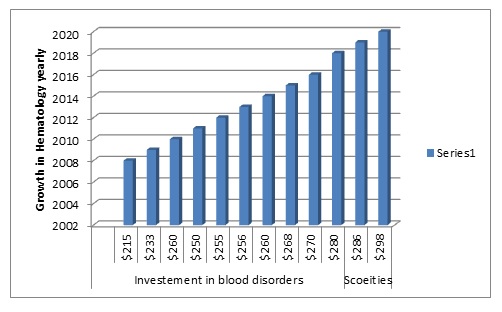
Hematology 2016
Hematology 2016 : Past Conference Report
The success of the Hematology 2016 conference has given us the prospect to bring the gathering one more time. Conference Series Ltd hosted the “6th International Conference on Hematology” during October 03-05, 2016 at Double Tree by Hilton Hotel, Orlando Airport, USA,
The conference was focused on Blood Disorder Research studies with the theme “Integrating Hematology Research Under A Single Roof”. The meeting engrossed a vicinity of comprehensive discussions on novel subjects like Hematologic Oncology, Immunology, Blood Transplantation, Blood Disorders, Diagnosis In Blood Disorder, Hematology Research, Hematology, Various Aspects of Hematology and so on.
The conference was embarked with an opening ceremony followed by Keynote sessions and followed by series of lectures delivered by both Honourable Guests and members of the Keynote forum. The adepts who promulgated the theme with their exquisite talk were:
- Knox Van dyke, West Virginia University, USA
- C Cameron Yin, The University of Texas MD Anderson Cancer Center, USA
- Robert Michael Davidson, American Institute of Stress, USA
- Dianzheng Zhang, Philadelphia College of Osteopathic Medicine, USA
- Enzi Jiang, University of Southern California, USA
Best Poster Awardee: Khulud Abudawood, University of Florida College of Nursing, USA
Conference Series Ltd offers its heartfelt appreciation to Organizing Committee Members, dexterous of field, various outside experts, company representatives and is obliged to other eminent personalities who interlaced with Conference Series Ltd and supported the conference in every aspect, without which the conference would not have been possible.
Your rejoinder is our inspiration; keeping this motto in mind and being witnessed the triumph of Hematology 2017, Conference Series Ltd would like to announce the commencement of the “11th International Conference on Hematology and Hematological Oncology” to be held during November 08-09, 2017 in Las Vegas, Nevada, USA. We welcome all the eminent researchers, students and delegate participants to take part in this upcoming conference to witness invaluable scientific discussions and contribute to the future innovations in the field of Hematology Research.
For More details: http://hematology.conferenceseries.com/
Let us meet again @ Hematology 2017
Conference Highlights
- New Drug Discovery in Hematology
- Hematology
- Blood Disorders
- Hematologic Oncology
- Blood Disorders: Diagnosis & treatments
- Immunology
- Blood Transplantation
- Stem cell Research
- Various Aspects of Hematology
- Blood Based Products
- Hematology and Nursing
- Veterinary Hematology
- Hematology and Pharma industry
- Hematology : Case Report
- Entrepreneurs Investment Meet
To share your views and research, please click here to register for the Conference.
To Collaborate Scientific Professionals around the World
| Conference Date | November 08-09, 2017 | ||
| Sponsors & Exhibitors |
|
||
| Speaker Opportunity Closed | Day 1 | Day 2 | |
| Poster Opportunity Closed | Click Here to View | ||
Useful Links
Special Issues
All accepted abstracts will be published in respective Our International Journals.
- Journal of Blood Disorders & Transfusion
- Journal of Blood & Lymph
- Journal of Hematology & Thromboembolic Diseases
Abstracts will be provided with Digital Object Identifier by



